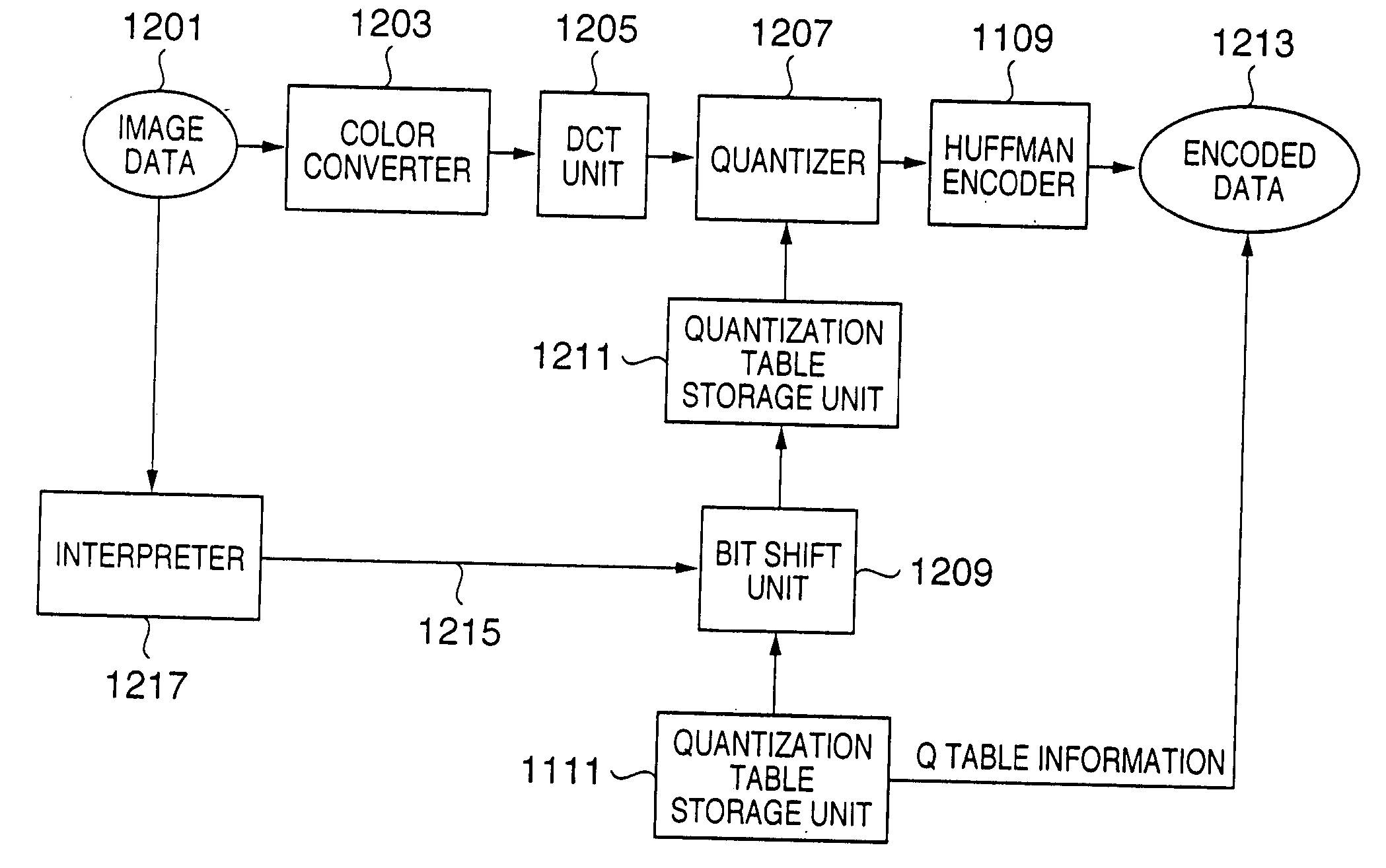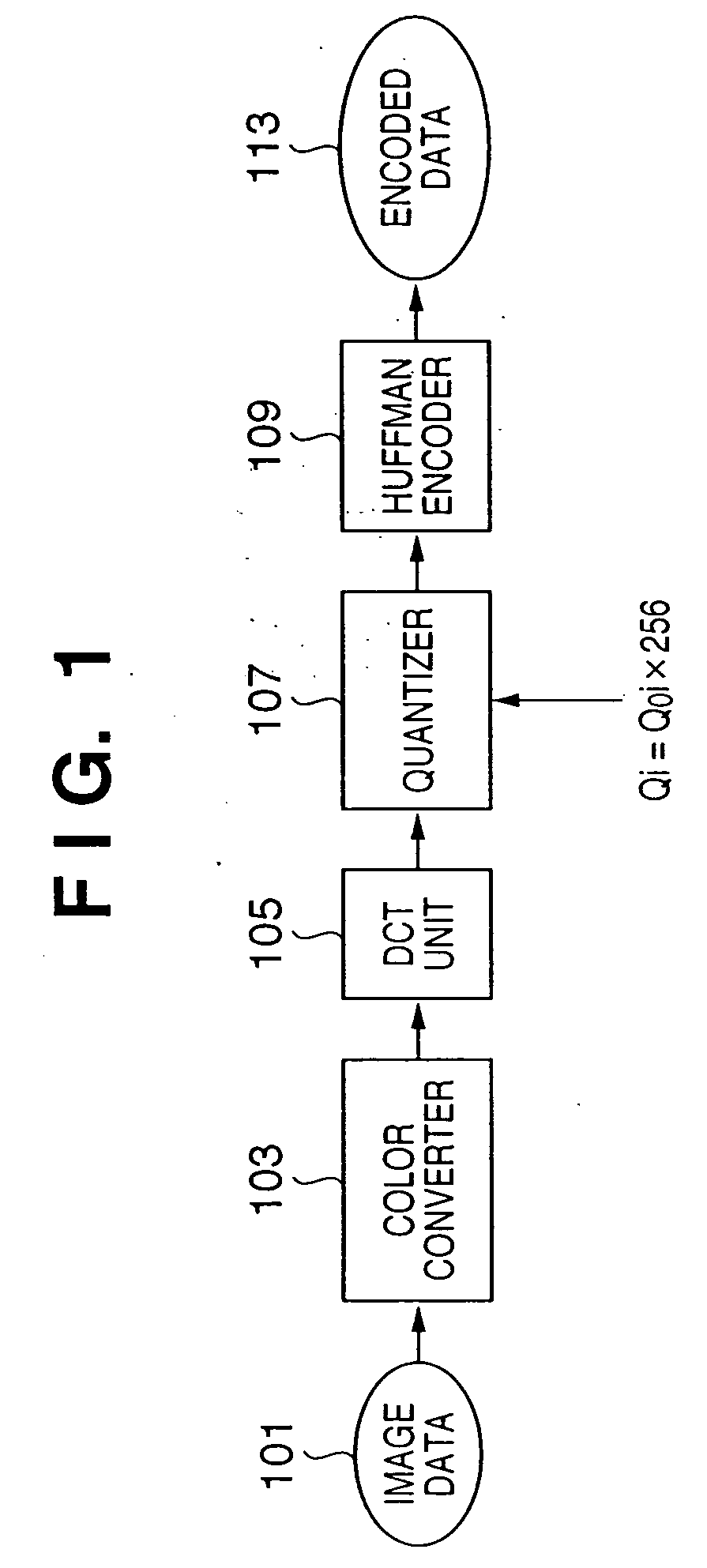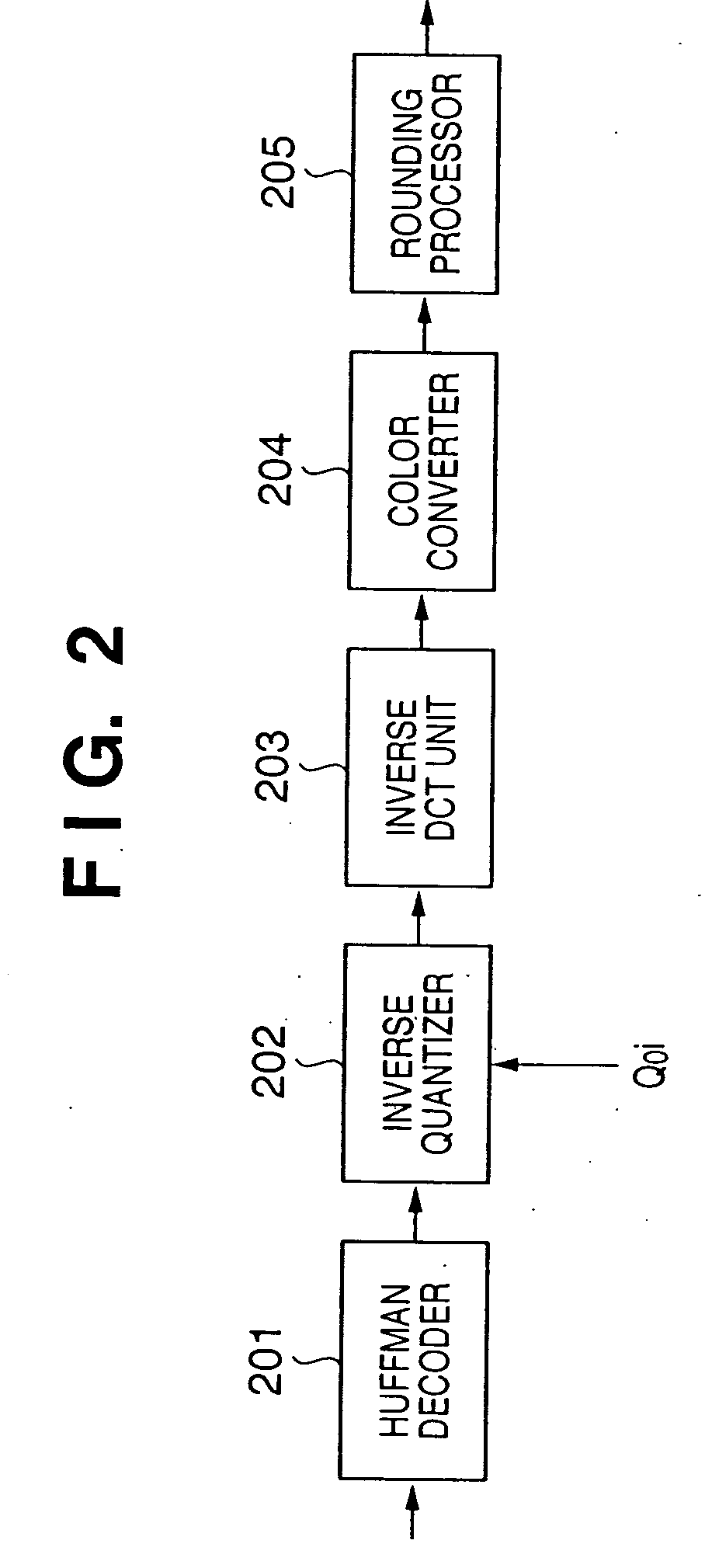Image encoding apparatus, and image processing apparatus and its control method
a technology of image data and encoding apparatus, applied in the field of encoding technique of image data, can solve the problems of inability to be processed by general applications, inability to reflect high precision of image data in compression-encoding data, and inability to generate target encoded data, etc., to suppress the drop in arithmetic precision.
- Summary
- Abstract
- Description
- Claims
- Application Information
AI Technical Summary
Benefits of technology
Problems solved by technology
Method used
Image
Examples
first embodiment
[0043] This embodiment will exemplify an encoding apparatus for generating encoded data from 16-bit image data per component, which obtains baseline JPEG encoded data (each color component of a decoded image is 8 bits), and Extended sequential DCT-based JPEG encoded data each color component of a decoded image is 12 bits).
[0044]FIG. 11 is a block diagram of an encoding apparatus of this embodiment. The difference from FIG. 10 is that processors except for the Huffman encoder 1109 and quantization table storage unit 1111 in FIG. 10 have processing performance that supports a 16-bit full range input. More specifically, the number of bits to be processed is extended by 8 bits in the MSB direction.
[0045] In order to distinguish the processors except for the above two processors from the conventional 8-bit compatible processors, different numbers are given as follows.
[0046] Reference numeral 1201 denotes input 16-bit full-color image data per color; 1203, 1205, and 1207, a 16-bit data...
implementation example
Description of Implementation Example
[0065]FIG. 13 is a block diagram when the image encoding apparatus of this embodiment is applied to a digital camera apparatus (image sensing apparatus).
[0066] Referring to FIG. 13, reference numeral 1001 denotes a CPU which controls the overall apparatus; 1002, a ROM which stores the processing sequence of the CPU 1001; and 1003, a RAM used as a work area. This RAM 1003 is used to temporarily store sensed image data so as to encode it. Also, areas serving as a first quantization table storage unit corresponding to the quantization table storage unit 1211 shown in FIG. 11, and a second quantization storage unit corresponding to the quantization table storage unit 1111 are assured on this RAM 1003.
[0067] Reference numeral 1004 denotes a connector used to connect a detachable memory card (storage medium) 1005. Reference numeral 1006 denotes an optical unit which comprises a lens, stop, and the like; and 1007, an optical unit controller for contro...
second embodiment
[0109] The second embodiment will explain a case wherein image data which is expressed by 16 bits per color component undergoes a JPEG encoding process to obtain an encoded bitstream, and that encoded bitstream is decoded to output an image which is expressed by 8 bits per color component.
[0110]FIG. 5 is a block diagram of an image processing apparatus (copying machine) to which the second embodiment is applied.
[0111] Referring to FIG. 5, reference numeral 501 denotes a scan unit which scans a document image with a precision of 16 bits per color component; 502, an encoding unit; 503, a decoding unit; and 504, a print unit which receives and prints an image which is expressed by 8 bits per color component. Reference numeral 505 denotes a storage device which stores encoded data output from the encoding unit 502. The decoding unit 503 reads out encoded data from the storage device 505 in accordance with the print speed of the print unit 504, and performs a decoding process. As a res...
PUM
 Login to View More
Login to View More Abstract
Description
Claims
Application Information
 Login to View More
Login to View More - R&D
- Intellectual Property
- Life Sciences
- Materials
- Tech Scout
- Unparalleled Data Quality
- Higher Quality Content
- 60% Fewer Hallucinations
Browse by: Latest US Patents, China's latest patents, Technical Efficacy Thesaurus, Application Domain, Technology Topic, Popular Technical Reports.
© 2025 PatSnap. All rights reserved.Legal|Privacy policy|Modern Slavery Act Transparency Statement|Sitemap|About US| Contact US: help@patsnap.com



